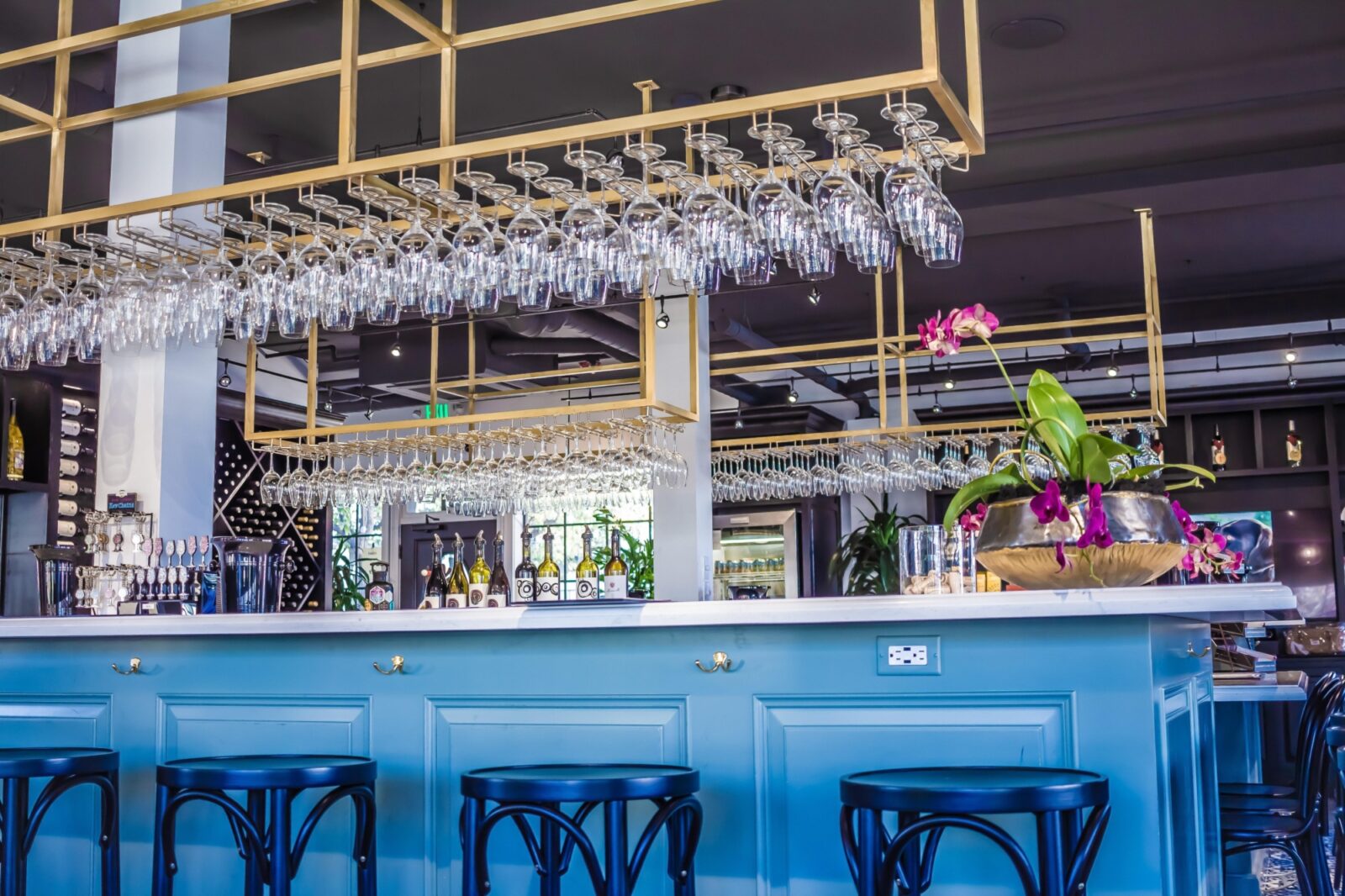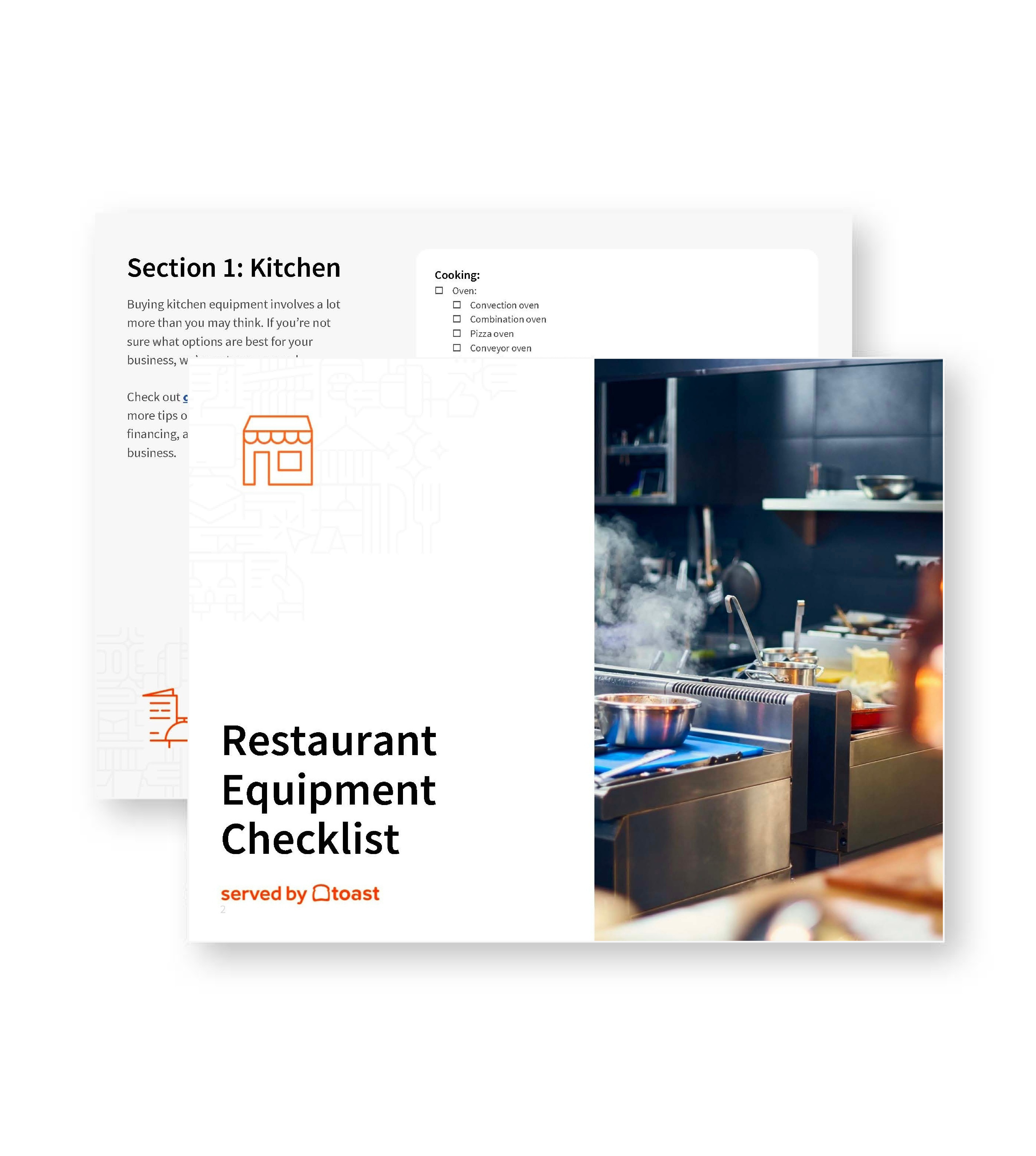
Essential Wine Bar Equipment List: Equipment Needed to Start a Wine Bar (2024)
Here’s the comprehensive list of essential bar equipment you’ll need to start a wine bar.

Nick PerryAuthor


Bar Equipment Checklist
Opening or upgrading a bar? Don't miss any essential equipment! Download our free, comprehensive Bar Equipment Checklist.
Get free downloadWhile opening a wine bar sounds like a dream idea, there’s more to it than just having a serious love for wine. There’s a lot of thought and work that goes into starting a wine bar, beyond coming up with a cool idea and finding a space. As they say, “a carpenter is only as good as their tools,” and bar owners and managers need the right quality tools to support their bar.
Sure, some types of bars don’t require anything too fancy. But, if you’re interested in starting a wine bar, then you’ll need some special equipment. (Not to mention, you might want to invest in equipment on the nicer side.)
With the right equipment, you can create a better wine bar experience for your customers, from wine quality and service to style and ambiance.
In this article, you will learn the essential wine bar equipment you need to get started.
Bar Business Plan Template
Use this free bar business plan template to easily create a great business plan that organizes your vision and helps you start, grow, or raise funding for your bar.

Ultimate Wine Bar Equipment List
If you’ve spent any time in a wine bar, you’ve probably noticed some of the equipment that you don’t typically see at your standard restaurant. Wine bars take wine seriously and they have the equipment to ensure the highest quality wine experience — not to mention plenty of dedicated storage space. Before you go to the bar supplier, review this wine bar equipment list.
Wine Bar Equipment
Wine Refrigerators
Wine refrigerators aren’t like normal refrigerators. Of course, you will also need a regular refrigerator if you’re serving charcuterie or appetizers. Wine refrigerators are more precise, however, and designed to keep wine at preset temperatures. Different types of wine are best served at specific temperatures, not just room temperature for red and cold for white.
A serious wine bar has multiple wine refrigerators to keep various types of wine stored at the proper serving temperature.
Wine Racks and Cellars
Some wines don’t require refrigeration, or it’s not necessary to refrigerate them until they’re closer to serving. While you may not have the cavernous space of a vineyard or winery, it’s important to have quality wine racks and/or a cellar for proper inventory management.
A large collection is a great, atmosphere-adding statement to make to your customers, but it’s also practical for staying stocked up on popular wines.
Decanters and Aerators
Crystal Decanters
Decanting is an important step in wine service. Allowing certain wines (especially older vintages) to sit in a decanter facilitates aeration, which helps the wine fully express its flavors and character. Crystal decanters are an elegant way to serve wine, speed up decanting, and add to the overall aesthetic of the bar.
Wine Aerator Pourers
It’s not always practical to leave wine sitting out in decanters to aerate, so wine aerator pourers are a good hack for both at-home and in-bar wine pouring. These bottle attachments aerate wine as you pour, saving both time and effort. They look a little funny, so you probably don’t want your wait staff pouring bottles with them at tables. Still, wine aerator pourers are useful to keep behind the bar.
Glassware
Glassware is essential equipment for any restaurant or bar. Wine bars though have some more specific glassware requirements.
Red Wine Glasses
You may not realize it but there’s a difference between red and white wine glasses. Red wine glasses have larger bowls to facilitate aeration and release more complex aromas while the wine is in the glass. They tend to be larger and deeper than the wine glasses you probably have at home.
White Wine Glasses
These are the wine glasses you’re probably used to drinking from at home. The classically rounded bowls are shallower and narrower than red wine glasses. It’s not just a style choice — this design helps maintain cooler temperatures and enhance delicate aromas.
Champagne Flutes
No wine bar is complete without champagne service. Champagne flutes preserve the effervescence of champagne by capturing the bubbles rather than letting them evaporate, which retains aromas and taste. These long slender flutes made for champagne come in many styles.
Wine Preservation and Dispensing Teams
Vacuum Sealers
Unless you only sell wine by the bottle, you can’t expect to finish each bottle you open on a given night with individual glass pours. When you open a new bottle, it’s important to use a vacuum sealer to remove the air from the bottle to slow down the oxidation process. This keeps a bottle fresh for longer.
Nitrogen Wine Preservers
Another effective, non-chemical wine preservation tool is a nitrogen wine preserver. These devices utilize inert nitrogen gas to replace the oxygen within the bottle. Not only does it slow down the oxidation process to keep the wine fresh, but it also protects a wine’s flavors.
Wine Dispensing Machines
If you’re feeling a little flush, wine dispensing machines are a cool, useful piece of equipment to add to your wine bar. These innovative machines take the guesswork out of wine pouring, dispensing precise portions that servers may struggle to imitate. This guarantees consistent pouring, mitigating waste and freeing up wine bar staff to focus on more complex tasks than pouring.
Bar Equipment Checklist
Opening or upgrading a bar? Don't miss any essential equipment! Download our free, comprehensive Bar Equipment Checklist.

Wine Bar Technology
In recent years, restaurant technology has taken off and become more essential to bar and restaurant operations than ever. Technology can streamline operations and automate certain tasks, making it easier for managers to run the establishment. Some of the important technologies you should consider for your wine bar include:
Point of sale (POS) system: A wine bar POS system is crucial as it will help create an optimized checkout flow for customers. A good POS system keeps track of customer tabs, makes checking out quick and easy, and imports all of the important data to your accounting and reporting programs.
Reporting and analytics: Speaking of, every wine bar needs good reporting and analytics tools to understand the bar’s performance. Good data will help you understand your most popular wines, which wines you may want to remove from the menu, and other useful business insights.
Inventory management: We’ve touched on this before, but wine spoils over time. A good wine bar keeps its inventory fresh. Great inventory management will ensure you don’t waste wine and you’re always fully stocked on the most popular items.
Payroll and team management: Staffing is one of the most challenging elements for any food or drink establishment. To ensure a happy team, you have to schedule both front- and back-of-house staff while balancing everyone’s variable tips and wages. Doing so is a lot easier with payroll and team management software.
Things to Consider Before Purchasing Wine Bar Equipment
You have a lot of wine bar equipment to buy, but you also have a lot of options. Think about the following when you’re making your final purchasing decisions.
Quality
Wine bars are supposed to be a bit more on the luxurious side. Your wine bar equipment should showcase quality and elegance while meeting the right overall aesthetic. That doesn’t mean you have to shell out for all of the top-of-the-line brands and tools. However, you should be willing to spend a little extra on durable, higher-quality equipment.
Space Considerations
Before you buy anything, make sure you have a good sense of your bar layout. You have a finite amount of space and you want to maximize every square inch of it. You need ample storage for your wine inventory and equipment, as well as a comfortable seating area, a bar, bathrooms, and potentially a kitchen. Your space will inform how much equipment you can have, where you need to put larger equipment, and how to make tools accessible to staff.
Pricing
Price is, of course, an important factor in any business decision. As we said, you don’t need to invest only in the most expensive equipment. You may want to spend a little more on crucial elements to your business like wine refrigerators or storage, while saving a little on stoppers, linens, and other basics. Don’t be afraid to shop around to get the right price — there’s no shortage of wine bar suppliers out there.
Ease of Use
You can train your staff on just about any kind of equipment, but it’s always better to have a shorter learning curve. Complicated hard-to-clean wine openers, overly-engineered wine fridges, and the like may look cool, but they could be more trouble than they’re worth. Make sure equipment is easy to use for all staff and easy to clean, too.
New vs. Used
Unlike most used restaurant equipment, you need to be a little more careful when shopping for used wine bar equipment. Things like glassware, utensils, and basic bar tools are fine to get used, but you shouldn’t compromise on wine-specific items like refrigerators, aerators, and preservation tools. Small defects can have a significant impact on wine quality and your connoisseur customers will notice. In a business that caters heavily to the connoisseur crowd, you don’t want to get a reputation for compromising on quality.
It may make the most sense to buy some equipment used to save money. After all, most equipment can be sufficiently cleaned. Nonetheless, the equipment that is especially foundational for running a higher-end wine bar business should be new.
Buying vs. Leasing
Many restaurant owners and managers choose to lease equipment rather than buy it. That’s because leasing costs less money in the short term. Rather than pay upfront for the equipment, you’ll pay it off (plus interest) with monthly payments. On the one hand, it’s less out of your pocket upfront, though you’ll likely pay more for the equipment over time due to the interest. One benefit of leasing, however, is that you may also get a warranty or maintenance plan that could save you money on any unforeseen issues with the equipment.
When you buy, you might also get a warranty. But, once this warranty is up, you’re solely responsible for maintenance costs. Nevertheless, if you have the budget, paying for a piece of equipment in full upfront is almost always less expensive in the long term.
***
There’s a lot of essential wine bar equipment you need to get your bar off the ground. From refrigerators and openers to technology and more, this comprehensive list will help you figure out what you have, what you need, and what to consider when shopping for wine bar equipment.
Is this article helpful?
DISCLAIMER: This information is provided for general informational purposes only, and publication does not constitute an endorsement. Toast does not warrant the accuracy or completeness of any information, text, graphics, links, or other items contained within this content. Toast does not guarantee you will achieve any specific results if you follow any advice herein. It may be advisable for you to consult with a professional such as a lawyer, accountant, or business advisor for advice specific to your situation.
Read More
Subscribe to On the Line
Sign up to get industry intel, advice, tools, and honest takes from real people tackling their restaurants’ greatest challenges.


